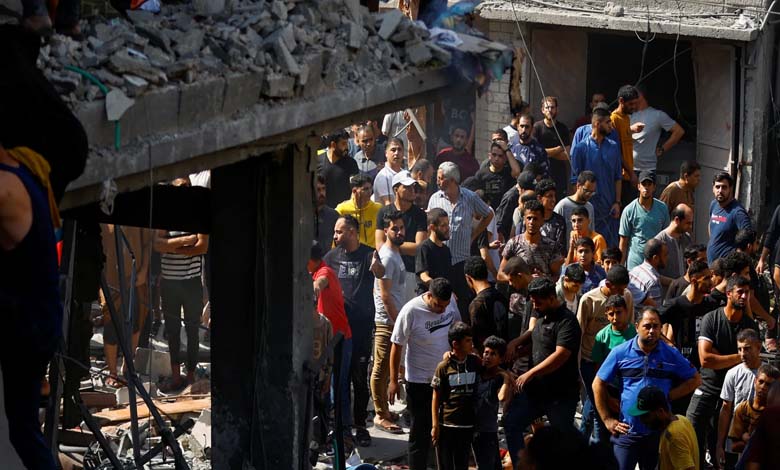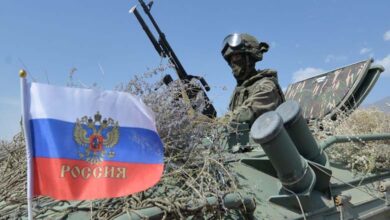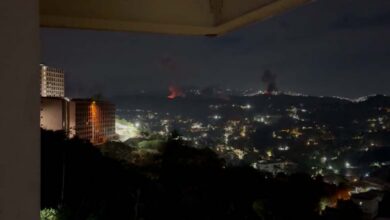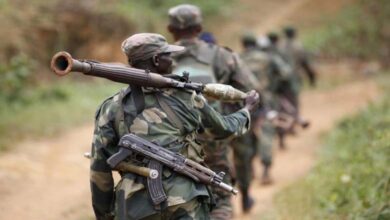“I pretended to be dead to survive”: How Gaza’s breadlines turned into graveyards

In Gaza, dying of hunger is no longer a metaphor. In less than three months, hundreds of people have been killed. Some survivors escaped death by pretending to be lifeless.
These deaths were not only caused by bombings, but also by starvation and the desperate search for food in aid queues that have become deadly traps.
-
Gaza Latest: 31 Killed by Israeli Fire Near Aid Center
-
U.S. Proposal on Gaza on Hamas’ Table… Talk of a Possible Breakthrough
In just the past two days, more than 100 people were killed in Gaza while attempting to collect food from distribution points. Since the partial easing of the blockade in late May, nearly 800 people have died, according to UN data and Gaza’s Health Ministry.
In the southern part of the strip, civil defense authorities reported that nine people were killed near a distribution center in the Al-Shakoush area northwest of Rafah, and four others near Al-Tahlia roundabout east of Khan Younis.
On Saturday, over thirty people were shot dead by Israeli forces near an aid distribution site in Rafah.
-
Gaza Latest: Evacuation Orders in the North and Humanitarian Ship Intercepted at Sea
-
Gaza Foundation: Potential U.S. Funding Could Entangle Washington in Aid Chaos
The next day, the tragedy repeated itself. Dozens were killed near a center operated by American contractors and backed by Israel and the US, close to the Zikim crossing between Gaza and Israel in the north.
Gaza’s Health Ministry and Civil Defense confirmed that 80 people died on Sunday, in addition to 32 killed in Saturday’s incident.
The UN World Food Programme reported that one of its 25-truck convoys carrying food to northern Gaza “faced large crowds of starving civilians who came under fire” shortly after crossing from Israel.
-
The Story of Two Grandchildren May Reopen the Genocide File in Gaza… Will France Take Action?
-
U.S. Veto Blocks Ceasefire Efforts in Gaza
The war and Israeli blockade have pushed over two million residents of Gaza to the brink of famine, according to the UN and international aid organizations.
Civilian deaths while waiting for food have become almost daily occurrences. Local sources and witnesses accuse Israel of firing on crowds, especially near distribution centers run by the “Gaza Humanitarian Foundation,” which is supported by Tel Aviv and Washington.
Horse-drawn carts carrying the wounded and dead are seen arriving at Nasser Hospital in Khan Younis.
-
Special Operation: Israel Announces Recovery of Two Hostages’ Bodies from Gaza
-
Latest Gaza News: 15 Killed While Waiting for Aid, Israel Acknowledges Incident
Who manages the aid?
The “Gaza Humanitarian Foundation,” created by Israel with American backing, runs four main distribution sites. Thousands of Palestinians flock there at dawn every day despite the danger, hoping to secure food.
The foundation began its operations in May and claims the confrontations occurred outside their premises, before opening hours. It explains that extreme hunger and lack of supplies drive people to arrive several hours early.
Although Israel says the foundation aims to prevent aid from reaching Hamas, human rights groups have strongly criticized the approach, calling it a violation of the principles of impartial and independent humanitarian aid.
-
When the Besieged Rise Up… Gaza Shouts at Hamas
-
Palestinian Political Analyst: The Occupation Is Deliberately Starving Gaza’s Children to Break the People’s Resilience
Not the first time
In recent weeks, there have been several bloody incidents—ranging from direct shootings to deadly stampedes.
Earlier in July, at least 20 people died in a crush near a distribution point. An Israeli airstrike near a clinic run by an American aid group also killed over a dozen people, according to Palestinian officials and aid workers.
In June, more than 100 Palestinians seeking aid were killed by Israeli forces in at least four separate violent incidents, according to Gaza health authorities.
-
Hunger Precedes Aid: Food Warehouse Stormed in Gaza Amid Humanitarian Collapse
-
After the Chaos of the First Distribution… Will the New Aid Mechanism in Gaza Hold?
UN aid operations continue to face severe obstacles, notably the lack of safe access and insufficient supplies, as warnings grow that Gaza is on the verge of famine.
Sunday’s deadly incident occurred near a border crossing, not inside one of the new aid centers. Yet both tragedies underscore the severe risks civilians face as Israel seeks to reshape the food distribution system in a war-torn Gaza, according to the New York Times.
-
Did the Gaza Truce Falter Over a Handshake? Details of the Rejected Proposal
-
Gaza Aid: Sudden Resignation of Director of the New Mechanism
Israel’s Response to the Latest Tragedy
Israel has come under mounting international criticism for restricting humanitarian aid to two million people in Gaza, pushing the territory to the brink of famine.
On Sunday, the Israeli military stated that its forces fired “warning shots” after thousands gathered in northern Gaza, claiming they were responding to “a direct threat”. It added that the reported number of casualties did not align with its initial review.
-
War in Gaza: Intensified Israeli Strikes and Rocket Response
-
U.S.-Backed Gaza Aid Plan Rejected by the United Nations
A day earlier, the military said its troops, stationed about 1,000 yards from an aid distribution point, had fired warning shots in the morning before the center opened, when people approached and ignored orders to stop.
The Gaza Humanitarian Foundation said, “No incidents occurred today at or near any of our aid distribution sites.” However, it acknowledged that deadly violence had taken place “hours before our sites opened.”
-
“Enough”: A Palestinian Cry from Gaza
-
Political Analyst: Gaza Faces a Slow Death Amid Disgraceful International Silence
Although the foundation has advised civilians to avoid approaching the sites before they open, many still arrive early, sometimes walking for hours, due to the severe shortage of food and the rapid depletion of available aid.
Pretending to Be Dead
Louay Abu Ouda, 24, described to The New York Times how he survived Saturday’s violence: “This has become my terrifying daily routine. I fell to the ground and pretended to be dead just to stay alive. I couldn’t even reach for my phone to check the time.”
-
Israeli escalation on Gaza 33 Palestinians killed including children in overnight airstrikes
-
Land Sea and Air… Israel Prepares for an Unprecedente Incursion into Gaza
In Khan Younis, young Amina Wafi summed up the despair in a single sentence told to AFP: “I’m very hungry. I’m afraid I’ll die hungry.”
What Is the Gaza Humanitarian Foundation?
The foundation was established by Israel with financial and diplomatic backing from the United States. It is staffed by American private contractors, with Israeli forces stationed nearby to secure the facilities.
-
Mass Displacement and Annexation Threats: The West Bank Faces a Gaza-Like Scenario
-
We Don’t Want to Hear the Word Evacuation: Gaza Voices Stand Against Displacement Plans
Israeli officials say the initiative is meant to deliver aid without benefiting Hamas, which they accuse of systematically seizing humanitarian supplies and restricting aid from reaching ordinary civilians.
However, human rights organizations argue that the foundation’s approach contradicts established international humanitarian practices.
-
Survey Reveals Scale of Discontent and Anger Towards Hamas in Gaza
-
Investigating Hamas: Signs of a New Mechanism to Deliver Aid to Gaza
Last month, 15 human rights groups from various countries issued a joint statement saying that its “militarized model, combined with close coordination with Israeli authorities, undermines the core humanitarian principles of humanity, neutrality, integrity, and independence.”
At a UN Security Council meeting last week—called by the UK, Denmark, France, Greece, and Slovenia to address concerns about the Gaza crisis—the United States defended the new model and accused aid organizations rejecting it of shirking their responsibility.
-
Israel Moves to Expand Military Operations in Gaza
-
11 Dead in Israeli Airstrike on Khan Younis… Gaza on the Brink of Total Collapse
A Drop in the Ocean
UN officials have reported that distributing aid to warehouses and bakeries inside Gaza is severely hampered by the lack of safe access routes, resulting in only minimal quantities of food reaching those in need.
Tom Fletcher, head of the UN humanitarian relief agency, said at the Security Council meeting that the aid reaching Gaza is “a drop in the ocean compared to the needs” of civilians.
He added: “Rising humanitarian needs in Gaza must be met without drawing people further into the line of fire.”
-
At Risk of Sinking: Drone Attack on Ship Carrying Aid to Gaza
-
Gaza Crisis: Agreement on an Independent Committee and Security Training in Cairo
-
UN Warns of Famine in Northern Gaza
-
Under a Tight Siege, Israel Expands Its Attack in Northern Gaza amid Reports of Hamas Activity
-
Bodies devoured by stray dogs: “Tragedy” in northern Gaza described by Jabalia












